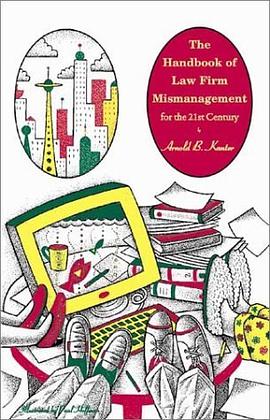
Mapping Cyberspace pdf epub mobi txt 电子书 下载 2025
The Authors
Martin Dodge
Martin Dodge is a computer technician, researcher and part-time Ph.D. student at the Centre for Advanced Spatial Analysis (CASA), University College London. His background is in social geography and geographical information systems. His Ph.D. research is on the geographical analysis of the Internet and mapping cyberspace. He directs the Cyber Geography Research project.
Two of Martin's related web projects:
Atlas of Cyberspaces
Geography of Cyberspace
Directory
Rob Kitchin
Dr Rob Kitchin is a Lecturer in Human Geography at the National University of Ireland, Maynooth. His research interests centre on the geographies of cyberspace, geographies of disability, and cognitive understandings of space. He is the editor of the journal Social and Cultural Geography, and author of Cyberspace: the World in the Wires (John Wiley, 1998).
- cybergeography
- cyberspace
- 城市
- 互联网
- map
- Mapping

About the Book
Space is central to our lives. Because of this, much attention is directed at understanding and explaining the geographic world. Mapping Cyberspace extends this analysis to provide a geographic exploration and critical reading of cyberspace and information and communication technologies. Mapping Cyberspace
* provides an understanding of what cyberspace looks like and the social interactions that take place there
* explores the impacts of cyberspace, and information and communication technologies, on cultural, political and economic relations.
* charts the spatialities, spatial forms and space-time relations of virtual spaces
* details empirical research and examines a wide variety of maps and spatialisations of cyberspace and the information society
Mapping Cyberspace draws together the findings and theories of researchers from geography, cartography, sociology, cultural studies, computer-mediated communications, information visualisation, literary theory and cognitive psychology. It is highly illustrated with 8 pages colour plates and over 50 black and white figures.
---------------------------------------------
Contents
List of illustrations
Preface
Acknowledgements
Beyond the book
1 Introducing Cyberspace
2 Geographies of the Information Society
3 Geographies of Cyberspace
4 Introducing the Cartographies of Cyberspace
5 Mapping Information and Communication Technologies
6 Spatialising Cyberspace
7 Mapping Asynchronous Media
8 Mapping Synchronous Media
9 Spatial Cognition of Cyberspace
10 Imaginative Mappings of Cyberspace
11 Future Mappings of Cyberspace
Notes
Bibliography
Index
----------------------------------------------
Preface
Space is an essential framework of all modes of thought. From physics to aesthetics, from myth and magic to common everyday life, space, in conjunction with time, provides a fundamental ordering system for interlacing every facet of thought. … In short, things occur or exist in relation to space and time
(Sack 1980: 4).
Space is central to our lives. We live and interact in space. Our lives are rooted and given context by the places we live in, the communities we inhabit, our sites of home, work and leisure, and are shaped by complex socio-spatial processes that operate across many levels, from the local to the global scale. In turn, spaces are produced and given meaning through social practices creating places. People's daily lives consist of a myriad of spatial behaviours, relationships and movements across and within spaces. From crawling across a playroom, to running around a school yard, to driving to work, to flying great distances for business meetings or a holiday, our daily lives involve hundreds of complex spatial choices and decisions that have to be successfully negotiated - decisions and choices that are socio-spatially situated, contexted by cultural, economic and political forces. Moreover, the world is geographically demarcated. The surface of the planet is divided into territories at varying scales from the home to cities to the national and beyond - spaces that are planned, regulated and governed. It is perhaps not surprising therefore that considerable attention has been directed at mapping, understanding and explaining the geographic world over the past millennium.
At the beginning of the new millennium, information and communication technologies (ICTs) are reconfiguring space-time relations, radically restructuring the materiality and spatiality of space and the relationship between people and place. Moreover, the conceptual space they support, cyberspace, is extending social interaction through the provision of new media that are increasingly reliant on spatial metaphors to enhance their operation. The combined power of ICTs and cyberspace is changing the way we live our lives, just as the telephone, car, and television did early in the twentieth century. Moreover, these changes are affecting our lives regardless of whether we actively use them or ever want to use them because they are being employed by multinational corporations and the institutions which structure daily living. Given the massive projected growth in users and online services, and the seemingly constant flow of innovations, it seems certain that the combination of ICTs and cyberspace will become one of the most significant evolutionary developments of the next century.
In Mapping Cyberspace, we provide a geographical analysis and critical reading of ICTs and cyberspace, and its relationship to social, cultural, political and economic life, pulling together the findings and theories of researchers in a number of disciplines including geography, cartography, sociology, cultural studies, computer-mediated-communications, information visualisation, literary theory and cognitive psychology. It is our contention that an essential element in understanding ICTs and cyberspace is a comprehension of how they are transforming, and creating new, spatialities, spatial forms and space-time relations. In short, we argue that geography continues to matter, despite recent rhetoric claiming the 'death of distance'. To provide evidence to support our claims, in Mapping Cyberspace, we detail a literal, conceptual and metaphorical mapping of ICTs and cyberspace. We believe that our analysis will be of interest to social scientists, policy makers, ICTs providers and regulators, software developers, and to information and computer scientists. Hopefully, the text and plates will also be of interest to the everyday users of ICTs and cyberspace.
Martin Dodge and Rob Kitchin
February 2000
Maynooth, Ireland
具体描述
读后感
评分
评分
评分
评分
用户评价
相关图书
本站所有内容均为互联网搜索引擎提供的公开搜索信息,本站不存储任何数据与内容,任何内容与数据均与本站无关,如有需要请联系相关搜索引擎包括但不限于百度,google,bing,sogou 等
© 2025 book.wenda123.org All Rights Reserved. 图书目录大全 版权所有




















